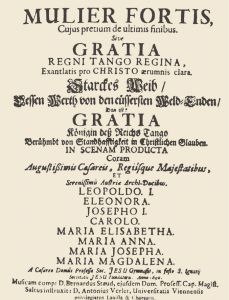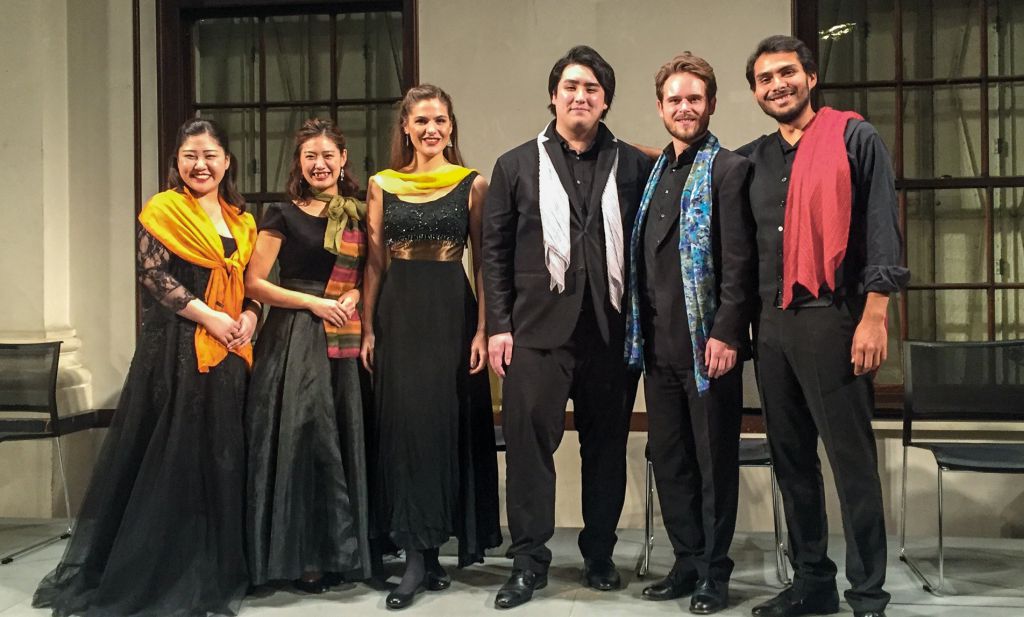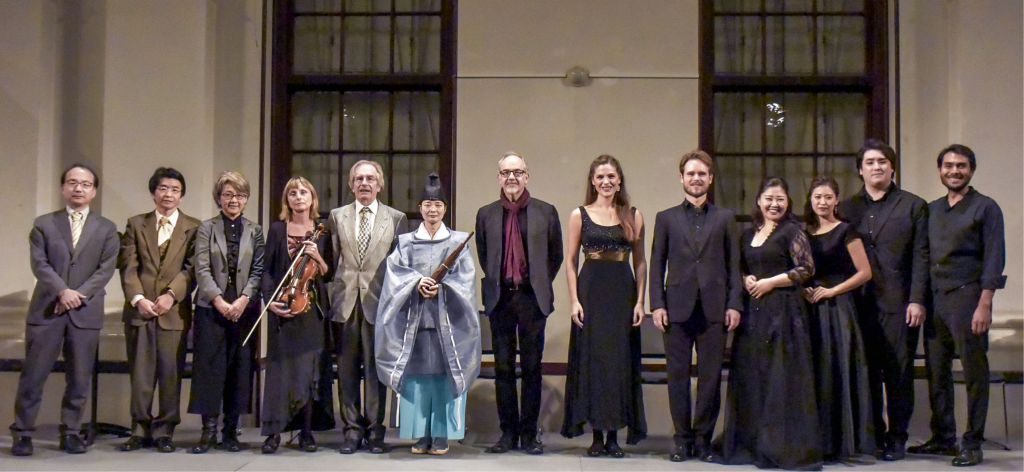Japan and Austria

In 2019, we celebrated 150 years of diplomatic relations between Japan and Austria, and thus one and a half centuries of eventful history that have witnessed the complete transformation of the notion of an Austrian state as well as Japan’s transformation from a “developing country” into a leading industrial power. Throughout all this continual change, however, one thing has remained a constant: the two countries’ mutual esteem and admiration when it comes to their cultures and traditions, especially in terms of music. Japan, upon reopening itself to the outside world, immediately established contact with Austria in order to become acquainted with Western music. And in Austria, major figures such as Johannes Brahms and (later on) Eta Harich-Schneider took an intense interest in the traditional music of Japan. So what would be more natural than to celebrate this great, amicable jubilee with a musical work that relates to both countries?
To 16th- and 17th-century Europeans, Japan seemed an exotic and foreign place. It was, however, by no means entirely unknown to Europe. It had already been reconnoitred by Portuguese and Spanish sailors, thereafter becoming a missioning destination for Jesuit monks. Japan’s internal political problems around 1600 then gave rise to policies aimed at eliminating outside influences, policies that included the expulsion of foreigners and the suppression of foreign ideas—with the eventual result being total isolation. It is with a newly conceived production that we would like to recall a story from those times of turmoil and religious tensions. This drama, set in 16th-century Kyoto, was written and premiered in Vienna in 1698.
Mulier fortis

The Jesuit drama Mulier fortis [A Strong Woman] recalls the suffering of Hosokawa Tamako (1563–1600), a historical figure who was a member of the high nobility and the wife of a feudal lord. She converted to Christianity and took the baptismal name of Gracia (Japanese: Garasha), was persecuted for political reasons, and was eventually forced to commit seppuku. Mulier fortis, however, alters her story in a very specific way: it has Gracia die by the hand of her violent husband because of her steadfast refusal to renounce her new faith. Thus martyred, this woman is celebrated as a model of constancy and strength.
To compliment the spoken drama, four oratorio-like intermezzi with music by the Viennese court composer Johann Bernhard Staudt (1654–1712) portray a dispute between the virtues and the affects (rendered as allegorical figures) before the backdrop of life’s difficult situations.
This drama’s première took place in 1698 at the Jesuit College in Vienna in the presence of the imperial family. It is a work that attempts to translate the concepts of the virtues and moral values into baroque images and characters. And its virtues of Constantia et Fortitudine, “constancy and fortitude”, were eventually to become the motto of Austria’s future Emperor Charles VI, who experienced the première of Mulier fortis as a prince.
Revival

The first performance of Mulier fortis in over 300 years took place on 21 November 2019 in Kyoto with students of the Kyoto City University of the Arts and singers from the mdw under the musical direction of Ingomar Rainer. This performance was not done as a historical re-enactment, for we wanted to expand upon ideas and associations in a way that transcends eras and cultures. The performance thus begins with a piece for the shô, a traditional instrument of courtly gagaku music—a kind of music that Gracia Hosokawa may have heard during her lifetime.
It was the allegory of constancy that inspired Karlheinz Essl to compose the included instrumental ensemble piece Constantia. The note “g”—an allusion to Garasha Hosokawa’s first name—runs throughout this composition like a golden thread that is impervious to all fluctuations, all perils.
Georg Muffat’s concerto grosso Cor vigilans [The Vigilant Heart], on the other hand, takes us farther into the world of baroque imagery, allusions, and allegories.

As an additional element for the Vienna performance at the Wiener Hofmusikkapelle (Hofburg) on 26 March 2020, students of Karlheinz Essl are currently composing electroacoustic miniatures that will be woven into the overall dramaturgical structure. In these pieces, the shô will play an important role as a Japanese gagaku instrument alongside soundscapes, computer-generated sounds, and a through-composed concluding performance.
Our hope, in conceiving of this, is that we might offer somewhat more than the typical concert of “early music”—much rather making an attempt to truly reclaim our common pasts while engaging in a lively manner with our present.

